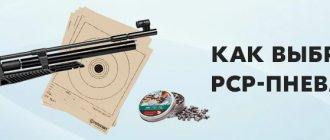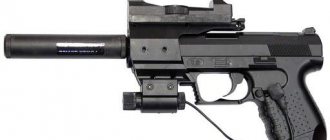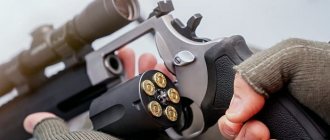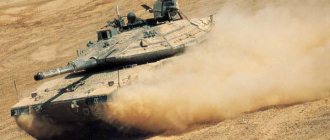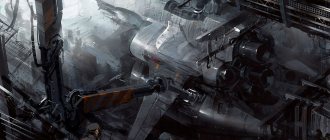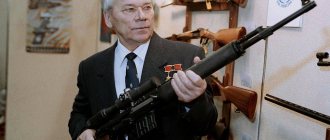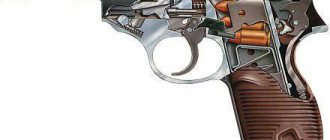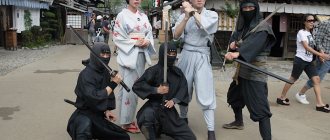Tanks, which appeared on the battlefields of the First World War, were used as the main offensive weapons. Bulky and reliable mechanisms posed a serious danger to infantry. In order to resist this formidable force, humanity was forced to create a special anti-tank infantry weapon, which was the bazooka. The description, design and technical characteristics of this weapon are presented in the article.
Acquaintance
Often, ordinary people are interested in the question: what is a bazooka? After watching Hollywood action movies, it becomes clear that this is a hand-held weapon. However, people far from the army may have the mistaken opinion that this is an ordinary grenade launcher. Military experts have given a definition of what a bazooka is. According to their wording, the weapon is a hand-held dynamo-reactive anti-tank grenade launcher. The bazooka (photo of the weapon is presented in the article) is not a recoilless rifle, but a portable missile launcher. This definition is due to the fact that the grenade is equipped with a special rocket engine.
Personal life
Tereshin publishes photos and videos on the Internet, but carefully avoids the topic of his personal life. According to media reports, now he does not have a girlfriend. At one time, Kirill dated Olesya Malibu, the couple even talked about marriage, but the relationship went wrong. After Tereshin decided to become famous, he moved from Pyatigorsk to Balashikha near Moscow.
Kirill still does not stop promoting himself, regularly publishing new videos on Instagram, under which he collects a lot of comments. Most of them are negative, but this does not stop the Synthol Jock. Often the heroines of his videos are girls, but there is no official information about how close the relationship is between them.
About the meaning of the word "bazooka"
In the last century, Americans invented a musical wind instrument, which was a straight sliding hollow pipe. This invention by B. Burns, very reminiscent of a trombone, was called “bazooka” (photo below).
Due to its external resemblance to a musical instrument, this name was later assigned to the hand-held anti-tank gun. In addition, there is another version of the origin of the name of the weapon. Firing from this grenade launcher is accompanied by a whistle, which can also be emitted by a Burns trumpet tuned to a certain key. Anyone wondering what a bazooka is will receive two completely different answers. This term is mainly used in the army to define a particularly powerful weapon. Today in the United States the word “bazooka” is a common noun.
Sale: where to buy/order?
The encyclopedia does not yet contain information about where you can buy or order this instrument. You can change this!
Which in the future put an end to tank hegemony on the battlefield. The “Bazooka” became the first hand-held grenade launcher in the world; after studying captured samples of this weapon, the Germans created their famous “Faustpatron”.
The name of this grenade launcher comes from a musical instrument that had the shape of a straight sliding hollow pipe, invented in the USA at the beginning of the last century. Later, the name "bazooka" became a household name, especially in the United States. This is how they began to call any grenade launcher, and simply a powerful and large weapon.
Bazooka was the result of work on the creation of anti-tank missile weapons carried out in the United States since the early 30s.
History of creation
Before the start of World War II, American infantrymen destroyed tanks with 37 mm guns and rifle grenades. To fire them, the military used special attachments that were equipped with weapon barrels. Among the most powerful rifle grenades, the M10 took first place. According to military experts, the US Army needed a more compact and maneuverable means of combating enemy tanks. The new weapon was supposed to occupy the niche between the grenade and the anti-tank gun. Simultaneously with the design of grenades, anti-tank rocket weapons were developed, for which a recoilless principle was provided.
Since land mines were intended as ammunition for American grenade launchers, these guns could not destroy enemy armored vehicles. Firing high-explosive charges was accompanied by very strong recoil, which negatively affected the condition of both the shooter and the gun. It is known that until 1942, the US Army had an urgent need for effective anti-tank weapons.
Infantry Strike Fist
The RPG-7 is considered the successor to the Faustpatron due to its external similarity. Like the German grenade launcher, with a 40-mm launch tube, RPG missiles have an over-caliber warhead from 65 to 105 mm in diameter at the widest part. These were quite powerful cumulative grenades, and they dealt with armored targets of the 70-80s with varying degrees of success.
But time does not stand still, the emergence of active armor and active means of protection, as well as the experience of war in urban combat, required a new, more powerful means. And it appeared.
The RPG-28 grenade was first presented to the general public in 2007, and in 2011 it was officially adopted by the Russian army. Its 125mm grenade is capable of penetrating a concrete wall 2.5 meters thick of reinforced concrete or 4 meters of brickwork. This renders the enemy's attempts to use city buildings as means of shelter or fortification useless.
But initially the tandem warhead of the RPG-28 rocket-propelled grenade was conceived as an anti-tank one. And here she has no equal. The tandem warhead ensures reliable destruction of existing and even future tanks. The main thing is that the grenade is not afraid of either mounted or built-in dynamic protection.
What is dynamic protection? These are containers filled with explosive material that are either mounted on top of the armor or placed inside spaced armor between the outer and inner layers. When an anti-tank cumulative projectile fires when it hits an active unit, it explodes and extinguishes and disperses the cumulative jet.
What is tandem? Double. Such a warhead has a so-called precharge, placed in front of the main one on a special rod, which delays the activation of the main charge. When the precharge hits the dynamic protection unit and explodes, it triggers. That is, the main charge hits the clean armor.
For its unique qualities - reliability, power, excellent accuracy and unsurpassed penetration, the RPG-28 among specialists received the name “tank killer”.
Spreading “cranberry” - for enemy tanks.
Download original: “RPG-28 “Cranberry”
About the modernized weapon
The world learned about what a bazooka was in 1942. Two US military personnel, Lieutenant E. Yule and Captain L. Skinner, proposed using a hollow pipe as a guide for the projectile. American weapons designers settled on the optimal and simple solution when creating an anti-tank weapon. The bazooka (photo below) was invented by combining an M10 shaped charge warhead and a high explosive rocket motor. 1942 was the year the world's first anti-tank grenade launcher, the M1, appeared. This is a dynamo-reactive weapon: a bazooka shot does not generate recoil. With the advent of this weapon, tank hegemony ended. In the future, on the basis of the American bazooka, German designers will create the legendary “Faustpatron”.
Late to the war
As soon as German hand-held anti-tank grenade launchers appeared in service with the Wehrmacht, it became quite obvious that this particular means of fighting tanks was becoming the main and most dangerous
It was especially important that infantrymen could arm themselves with them: there was no need to establish interaction between infantry and anti-tank artillery, which often resulted in a decrease in the effectiveness of the latter. But for some reason, until the end of the war, the Red Army never received its own hand-held anti-tank grenade launchers, although it successfully used “bazookas” and used captured “faust cartridges” at the first opportunity.
In the Soviet army, the RPG-7 very quickly became the main anti-tank weapon for infantrymen, who valued it for its simplicity of design and use.
Why this happened was explained quite frankly in his memoirs by Marshal of Artillery Nikolai Yakovlev, who throughout the Great Patriotic War served as head of the Main Artillery Directorate of the Red Army. He honestly admits that until the end of the war the Red Army never received such a simple and effective means of fighting tanks as the Germans had the Faustpatron, since “the GAU, and therefore I, as its chief, did not show the necessary persistence, to prove the combat value of this kind of anti-tank weapons.”
As Marshal Yakovlev notes, the main reason for this was the reliance on anti-tank rifles, which performed quite well in the first stage of the Great Patriotic War, while they were used against relatively thin-armored German tanks. As Yakovlev writes, “the entire course of discussions that took place at Headquarters almost from the first weeks of the war boiled down to the speedy creation, first of all, of anti-tank rifles. It was believed that since even the 50-mm mortar was not popular among the troops due to its short range, then why, they say, create some other close-combat weapon along with the PTR. In addition, they say, there are also anti-tank grenades. As a result, we never created weapons similar to those the enemy had.”
Soon after the “Seven” was adopted, this well-recognized weapon became one of the symbols of the Soviet army.
Artillery Marshal Nikolai Yakovlev is not entirely accurate about the fact that a weapon similar to the Faustpatron was not created in the Soviet Union until the end of the war. They managed to create it, but did not finalize it and put it into service. Meanwhile, it was this particular model, called the “RPG-1 Handheld Anti-Tank Grenade Launcher,” that became the progenitor of all such Soviet systems.
Baptism of fire of a new weapon
After testing, the bazooka was officially adopted in 1942. At this time, its mass production was established. It was decided to supply the first batch to the landing troops in North Africa. 5 thousand guns and 25 thousand missiles were sent to them before the start of the special operation “Torch”. The American anti-tank weapon turned out to be very effective: the cumulative grenade penetrated homogeneous armor 9 cm thick. Not a single German or Italian armored vehicle could resist the bazooka.
However, American soldiers noted that during firing from a grenade launcher there was significant dispersion, which negatively affected the effective range of the bazooka. Nevertheless, US generals recognized this shortcoming as acceptable. Several units of anti-tank grenade launchers fell to the Germans. On the basis of captured bazookas, German weapons designers created
The birth of the "seven"
Its development began in 1944 at the GAU Small Arms and Mortar Weapons Research Site. These works were supervised by the leading designer of the test site, Georgy Lominsky, who later became one of those who created the Soviet nuclear shield. Lominsky managed to construct a fairly simple complex, consisting of a grenade launcher itself, reusable, like a bazooka, and a cumulative grenade, which was fired in the same way as a Faustpatron grenade. What is noteworthy is that already in the first Soviet RPG the characteristic features of the future RPG-7 are discernible: loading from the muzzle, a pistol control handle located in the first third and a wooden barrel.
Soldiers of the National Liberation Front of South Vietnam became the first to use the RPG-7 to fire at enemy helicopters.
Its creators managed to complete all the main work on the new weapon in just a year, but the modification of the ammunition dragged on for another three years, and as a result, the RPG-1 was never put into service. Instead, the first Soviet serial anti-tank hand grenade launcher was the RPG-2, which was put into service in 1947. He could have even managed to become a participant in the first major local conflict after the end of World War II - the Korean War, but he did not get there because he suffered from many “childhood diseases.”
In particular, the powder charge that fired the grenade from the barrel of the RPG-2 consisted of black powder, and the cloud of smoke immediately unmasked the shooter. Secondly, the ejector charge itself was rather weak, which ensured the low flight speed of the RPG-2 projectile. In fact, this resulted in a sharp decrease in the accuracy of the hit: the wind, especially the side wind, knocked the projectile off its trajectory so much that the effective impact range did not exceed 100 meters. Another unpleasant feature of the “two” also emerged. This grenade launcher had a paper cartridge of a powder charge: it was too fragile to keep the weapon constantly loaded, and outside the barrel it easily became wet, making loading impossible.
In Afghanistan, soldiers of the Soviet army used a grenade launcher mainly to shoot at dushmans hiding behind stone rubble or adobe fences.
But all these shortcomings were not very important against the background of the main drawback of the RPG-2 - narrow specialization. It could only be used as a weapon to fight tanks, while by the mid-1950s it became clear that the army needed a universal portable weapon, suitable for fighting enemy personnel, including shooting at their shelters. This put forward new requirements for hand-held anti-tank grenade launchers: they had to have a longer firing range, greater charge power, increased accuracy and become more survivable and reliable.
The Mujahideen quickly appreciated the convenience and effectiveness of the grenade launcher, successfully using it to shoot at Soviet armored vehicles and cars.
In 1956, the Soviet leadership assigned the Moscow GSKB-47, which specialized in the development of ammunition, to solve these problems, since it was the characteristics of the shot that primarily determined the capabilities of the new grenade launcher system. The grenade launcher itself was designed in Kovrov at OKB-575 at the local weapons plant named after Vasily Degtyarev, his son Vladimir Degtyarev became the chief designer, and several other design bureaus and enterprises were involved in sights, fuses and other elements. Through their joint efforts, by the summer of 1959, they managed to create the weapons required by the Soviet army, which was confirmed by the results of the demonstration of the RPG-7 complex to the then USSR Minister of Defense, Marshal Rodion Malinovsky.
It took another year to eliminate the shortcomings of the new weapon noted by the minister and his advisers, and the same amount for field testing with final refinement. And finally, on June 15, 1961, the new Soviet hand-held anti-tank grenade launcher was adopted by the Soviet Army by Decree of the Council of Ministers of the USSR No. 535-222. And soon the allies and satellites of the Soviet Union began to receive it, starting with the armies of the Warsaw Pact countries and ending with the people's liberation movements of Asia and Africa.
About M1A1
In 1943, American weapons designers tried to correct all the shortcomings identified in the first bazooka model. The modified weapon is listed as M1A1. Serial production of the gun began in 1943. The dimensions in this version remain the same. The launch tube was reinforced with steel wire. In the design of the gun, it was decided to remove the front handle. At the same time, the bazooka was supplemented with a protective screen. It is located in the front of the pipe. Changes also affected the grenade's electric launch system. However, despite all the design improvements to the gun, difficulties arose in supplying it with charges. The HEAT grenades used in the M1A1 could not be loaded into the base bazooka model. In Normandy, American infantrymen were confronted by heavy German tanks. In order to ensure an effective fight against the armored vehicles of the Nazis, American gunsmiths began to create a new model of anti-tank gun with increased armor-piercing power.
Brass
Non-standard musical instruments include a pyrophone, which produces sounds through special pipes using the movement of air masses heated by fire.
Chinese legends say that the man who invented the music was named Ling Leung. He invented a bamboo flute and began to use it to make sounds similar to birdsong.
Vegetable pipe
Despite the fact that the saxophone was invented back in 1840, it became popular in the 40s of the last century, when jazz appeared.
In America, the Luray Caves were equipped with unique organs made from stalactites, connecting 37 stalactites to the organ pipes, which have different sounds.
The bazooka is called not only a formidable weapon, but also an instrument resembling a trombone.
Derived from the ancient Greek (lyre). Also known as baglama
", distributed in Greece, Cyprus, Israel, Ireland ("zouk") and in a slightly modified form in Turkey (Turkish bouzouki). The classic bouzouki has 4 double metal strings (archaic - baglama - 3 double). The bouzouki family also includes a tiny bouzouki with 3 double strings, without the sounds of which not a single Greek orchestra playing in the “rebetiko” style can do.
The top of a bouzouki is made from Sitka spruce, Virginia juniper or koa. Mahogany, mahogany, maple, koa or walnut are used for the shell and back (for the Irish version) or the stacked fins of the resonator (for the Greek version).
Modern instruments use metal strings. Often the third and fourth choirs each contain one winded string.
About the M9 bazooka
In 1943, American designers designed a new modification of the grenade launcher, which is listed as M9. In this model, the gunsmiths corrected the shortcomings inherent in previous versions of the guns. The guide tube in the modified bazooka had two parts, making transportation of the M9 much more convenient. The designers increased the length of the weapon to 155 cm. Instead of unreliable electric batteries, the gun was equipped with an induction generator, located on the pistol grip. It was also decided to replace the wooden shoulder rest with an aluminum one. In addition, the M9 was equipped with an optical sight, thanks to which the sighting range increased to 640 m. Instead of a shield, the bazooka was equipped with a bell. By modernizing the rocket-propelled grenade, gunsmiths solved the problem of the bazooka's insufficient armor penetration. The front of the grenade was now rounded, reducing the likelihood of ricochet.
In order to improve the flight of the projectile, the ammunition was equipped with a cylindrical stabilizer, and the cumulative recess was equipped with a new copper lining. As a result of design improvements to the grenade, its armor penetration rate was increased. Using the M9 bazooka, homogeneous armor 10 cm thick was penetrated. It was also possible to expand the range of projectiles. Smoke and anti-personnel fragmentation grenades were intended for the M9.
Build a bouzouki
Bouzouki has 2 different string configurations:
3 groups of 2 strings (3 choirs), considered the most ancient; 4 groups of 2 strings (4 choirs) or classical.
Instrument structure with 3 choirs:
The most common tuning is DAD
.
In some cases, there is a “black system” - EAE
.
Instrument structure with 4 choirs:
The most commonly used is CFAD
as the most frequently encountered in historical literature.
Many beginning players use DGBE
(copying tuning from the 1st to 4th string).
The most common tuning is GDAE (copying tuning), however, the length of the bouzouki neck with this tuning makes playing difficult. the GDAD
and
ADAD
variants are firmly established as the most convenient for playing in the keys
G
and
D
, respectively.
About further modifications
In 1944, the United States entered service with a new anti-tank weapon capable of penetrating enemy armored vehicles 12 cm thick. This model of grenade launcher is listed as M9A1. In 1945, American gunsmiths created a new modification of the bazooka - the M18. Structurally, this grenade launcher was completely no different from its predecessors. However, aluminum was widely used in the production of the M18, which helped reduce the weight of the bazooka by almost 2 kg. In addition, this grenade launcher is not subject to corrosion processes.
About the device
The weapon is a 60 mm caliber smooth-walled steel pipe open on both sides. The bazooka design contains the following elements:
- Electric ignition device. Contains two dry batteries, signal light, wiring harness and contact trigger. This device ignites reactive grenade charges.
- A safety box in which the contact rod is located.
- Sighting devices.
- Shoulder rest. Its interior is used to house dry batteries and a warning light.
The rear end of the tube is equipped with a special ring, the purpose of which is to make it easier for the shooter to install the charge in the barrel channel. The front end of the pipe was equipped with a shield. It provides protection to the shooter from the hot gases of grenade rocket engines.
Links
Rifles and carbines Springfield M1903 • M1917 Enfield • M1 Carbine • M1 Garand • Johnson M1941 Submachine guns Thompson • M2 Hyde • M3 Grease Gun • Reising M50 / M55 • UD M42 Grenades and grenade launchers Mk 2 • Bazooka • Shotguns Winchester Model 1897 • Ithaca M37 • Winchester Model 1912 • Browning Auto-5 • Remington Model 31 Machine guns Browning M1917 • Browning M1918 • Browning M1919 • Johnson M1941 • Browning M2 • Lewis Flamethrowers • M1A1 Ammo .22 Long Rifle • .45 ACP • .38 Special • .30-06 Springfield • .30 Carbine • .50 BMG Rifles and machine guns M1 and Mark 2 • M1918 • • M14 • M15 • M16 • XM22/E1 • XM106 • XM70 • FN SCAR • HK416/M27 Carbines M1/M2 • XM177/E1/E2 and GAU-5/A • Colt Model 653 • M231 • M4/A1/E2 • GUU-5/P • Mark 18 Sniper rifles M14SE • M21 • M24 • M25 • M39 • M40 • M82 and M107 • M88 and Mark 15 • M110 • Mark 11 • Mark 12 • Mark 14 • DMR • RC-50 • SAM-R • SDM-R • M2010 Submachine guns Thompson • • Smith & Wesson M76 • MP5/K Guns Ithaca M37 • Remington 870 • Mossberg 500/590 • M1014 • XM26 Machine guns M60 series and Mark 43 • XM207/E1 and Mark 23 • M73/M219 • M85 • M240 • Stoner 63 • M249 series and Mark 46 • XM262 • XM312 • Mk 21 • EX 27 • Mark 48 • Browning M2 • GAU-19 • M134 Minigun • LW50MG • LWMMG Hand grenade launchers M79 • XM148 • M203 • M234 • M320 • M32 • EX 41 • Mark 13 Automatic grenade launchers M75/M129 • XM174 • Mark 19 • Mark 47 • XM109 • XM307 Other weapons XM25 • M20A1/A1B1 • M67 • M72 series • M136 (AT4) • M141 • M202/A1 • Mark 153 • FIM-43 Redeye • FIM-92 Stinger • FGM-172 SRAW • Ammo 7.62x33mm • 5.56x45mm NATO • 7.62x51mm NATO • .30-06 Springfield • 12.7x99mm NATO • .300 Winchester Magnum • 9x19mm Parabellum • .45 ACP • 12 gauge
About the operating principle
The design features of the bazooka give the shooter the opportunity to safely launch a grenade in the desired direction. The combat crew consists of two people. One fighter is loading the barrel channel with a cumulative grenade, and the second is aiming, aiming and shooting at the target. The peculiarity of firing from this anti-tank weapon is the mandatory control of the space behind the gun.
This need is due to the fact that operating engines of cumulative grenades generate hot gases, which can seriously injure people. In addition, when operating a bazooka, it is important that there is no equipment and, most importantly, ammunition behind the shooter. The formation of a hot jet imposed some restrictions on the use of the bazooka. For example, a soldier in a trench cannot shoot from this weapon.
About the main tactical and technical characteristics of the M1
- By type, the bazooka is a dynamo-reactive hand-held anti-tank grenade launcher.
- Country of origin: USA.
- In service with the US Army since 1942.
- Used in World War II and the Korean War.
- The mass of the bazooka without a cumulative grenade is 8 kg.
- Pipe length -137 cm.
- The released charge has an initial speed of 82 m/s.
- The gun has a firing range of up to 365 m. The bazooka is most effective at a distance of 135 m.
- The anti-tank weapon is currently in use.
RPG LAW M72 - American anti-tank grenade launcher
In the early seventies, the United States began developing a new close-combat anti-tank weapon that could be controlled by a single soldier. They wanted to not only replace the outdated Bazooka grenade launchers, but also use them to protect buildings not covered by anti-tank defense guided missiles. The weapon was developed by the American company Hesse Eastern Co., and in 1969 it was put into service with the American army. Grenade launchers of this type are included in the equipment of the armies of Australia, Belgium, Denmark, Great Britain, Israel, Canada, the Netherlands and Austria. In Norway, the American disposable RPG LAW M72 A2 and M72 A3 are produced under license.
About M20
Created on the basis of a captured American bazooka, the German Panzerschreck proved to be a very effective anti-tank weapon during World War II. This stimulated US designers to design a new, improved model. It was possible to create it at the end of the war. The new anti-tank grenade launcher is listed in the documentation as M20; the military called it among themselves: “Super Bazooka.”
Externally, the gun was practically no different from the German Panzerschrecks. However, according to experts, the 90-mm gun had greater penetrating power and lighter weight. The ammunition used was a 4-kilogram M28A2 cumulative missile. The design of the M20 consists of a smoothbore tube, a firing device located in the handle, a folding bipod, a shoulder rest and an optical sight.
Cumulative and fragmentation grenades were used to fire the Super Bazooka. Of all the modifications, the M20 turned out to be the most successful. The gun penetrates homogeneous armor 28 cm thick. The increased caliber and high performance contributed to the widespread use of the Super Bazooka in many armed conflicts.
